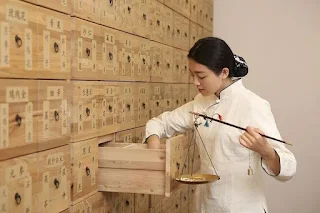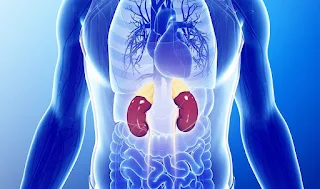As the rainy season approaches, nature begins to gradually awaken and all
things revive. Rainwater, as one of the twenty-four solar terms, marks the
beginning of rainfall and the gradual increase in rainfall. In traditional
Chinese medicine theory, the rainy season is closely related to the
physiological and pathological changes of the human body, especially for
patients with kidney disease, the regulation during this period is particularly
important.
1. Rainwater Solar Terms and the Five Elements of Traditional Chinese
Medicine
The rainy season belongs to spring, which belongs to wood in the Five
Elements and corresponds to sourness, greenery, and the East. However, water is
the mother of wood, and the arrival of rainwater provides nourishment for the
wood elements in spring. The kidney belongs to water in the Five Elements,
corresponding to winter, northern, and black. Although spring is the main
season, the kidneys, as water organs, still receive special attention during
this period. Because the kidney is the innate foundation, responsible for
storing essence and providing the driving force for life activities. In spring,
liver wood grows and needs nourishment from kidney water. Therefore, the rainy
season is of great significance for regulating the kidneys.
2. The Effect of Rainwater Solar Terms on Kidney Disease
Increased humidity: During the rainy season, the humidity in the air
gradually increases. Heavy dampness can easily trap the spleen and stomach,
affecting the circulation of water and dampness. For patients with kidney
disease, the invasion of dampness can increase the burden on the kidneys,
leading to worsening symptoms such as edema and poor urination.
Cold evil has not completely receded: Although the temperature gradually
rises in spring, during the rainy season, the cold evil has not completely
receded. Cold pathogens can easily invade the kidneys, leading to kidney yang
deficiency and weakness, resulting in symptoms such as soreness and weakness in
the waist and knees, fear of cold, and cold limbs. Therefore, patients with
kidney disease still need to pay attention to keeping warm and avoiding the
invasion of cold pathogens during this period.
Emotional fluctuations: Liver wood grows in spring, and emotions are prone to
fluctuations. For patients with kidney disease, emotional fluctuations can
affect the circulation of qi and blood, thereby increasing the burden on the
kidneys. Therefore, maintaining emotional stability is particularly important
for regulating kidney disease patients.
3. The Relationship between Traditional Chinese Medicine Regulating Kidney
Disease and Rainwater Solar Terms
Dispelling dampness and strengthening the spleen: During the rainy season,
patients with kidney disease should pay attention to dispelling dampness and
strengthening the spleen. It is advisable to consume foods that have the
function of invigorating the spleen and dispelling dampness, such as yam, coix
seed, and lentils. At the same time, avoid consuming overly greasy and sweet
foods to avoid exacerbating dampness.
Warm tonifying kidney yang: In response to the situation where cold
pathogenic factors have not yet subsided, kidney disease patients can
appropriately consume warm foods, such as chives, ginger, lamb, etc., to enhance
the warming effect of kidney yang. At the same time, pay attention to keeping
warm and avoid the invasion of cold evil.
Emotional regulation: In spring, when emotions fluctuate greatly, kidney
disease patients should pay attention to emotional regulation. Stress can be
relieved and emotional stability can be maintained through appropriate exercise,
listening to music, and communicating with friends.
4. Summary and Outlook
There is a close relationship between the rainy season and traditional
Chinese medicine kidney disease. During this period, patients with kidney
disease should pay attention to regulating aspects such as dispelling dampness,
strengthening the spleen, warming and tonifying kidney yang, and regulating
emotions. At the same time, it is important to closely monitor changes in one's
own condition and seek timely medical treatment. Through scientific and
reasonable conditioning and treatment, it is believed that kidney disease
patients can spend a healthy and comfortable rainy season.

















